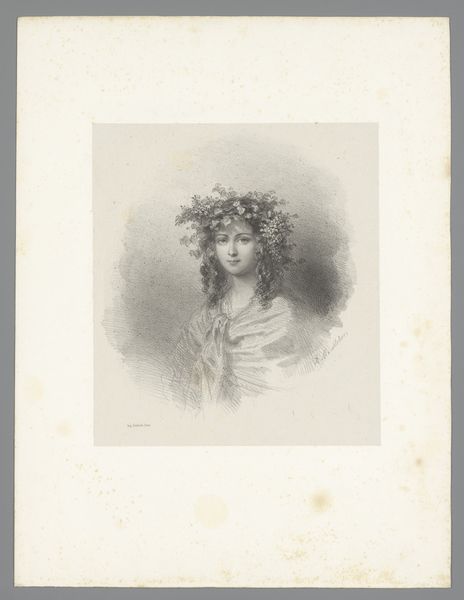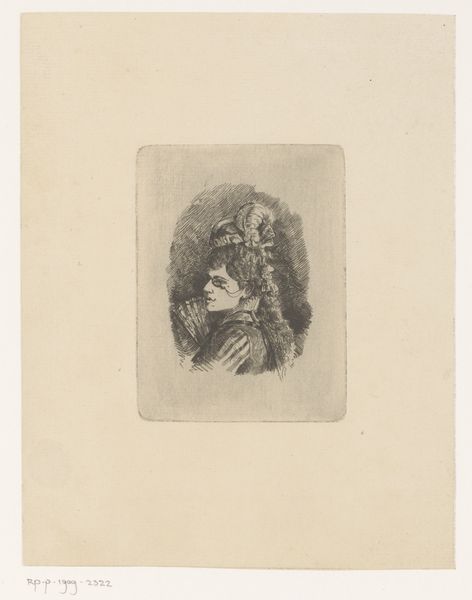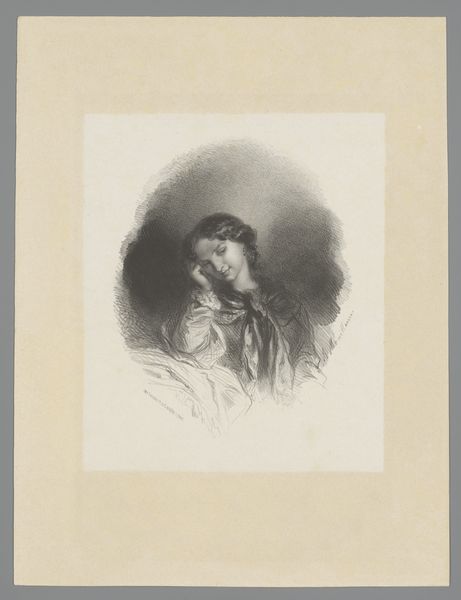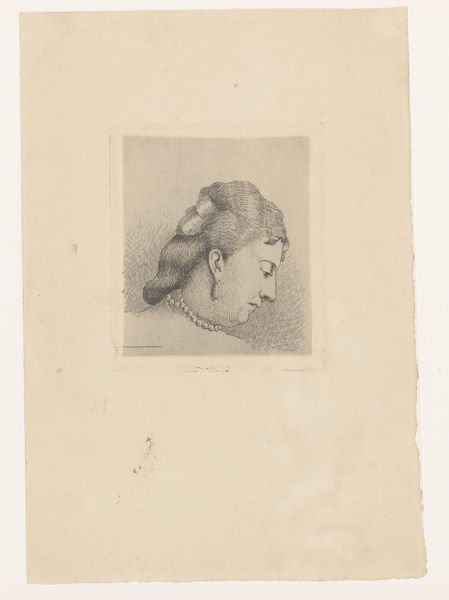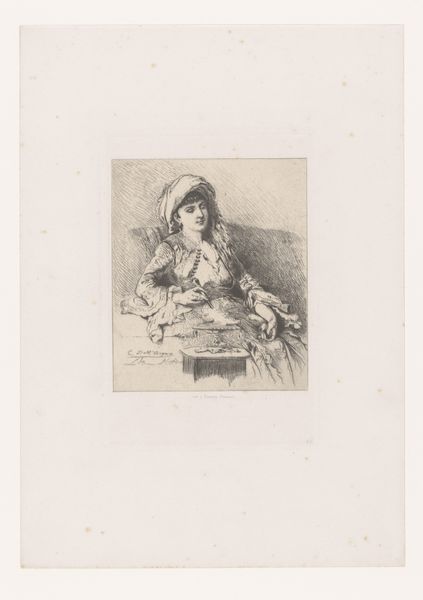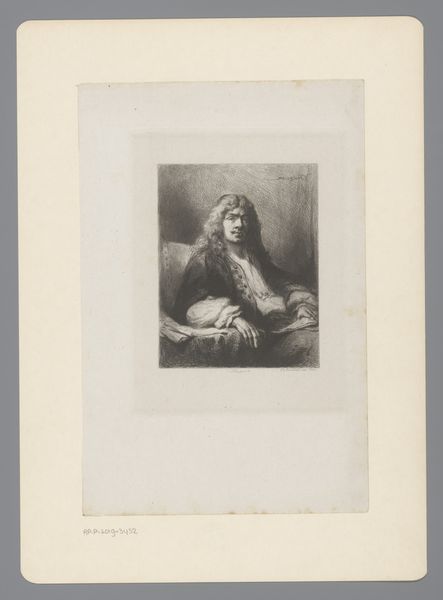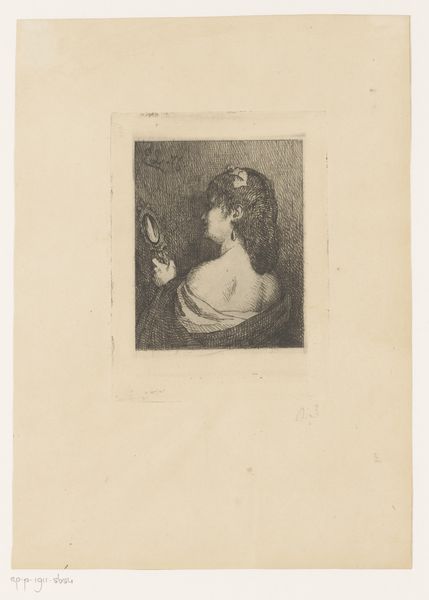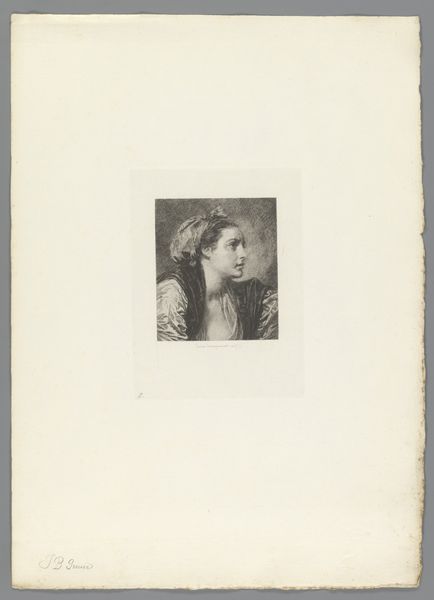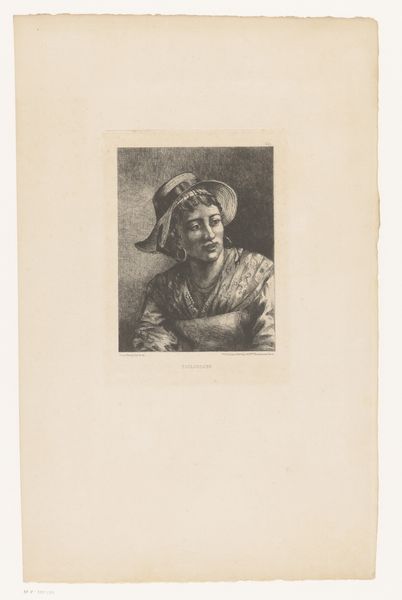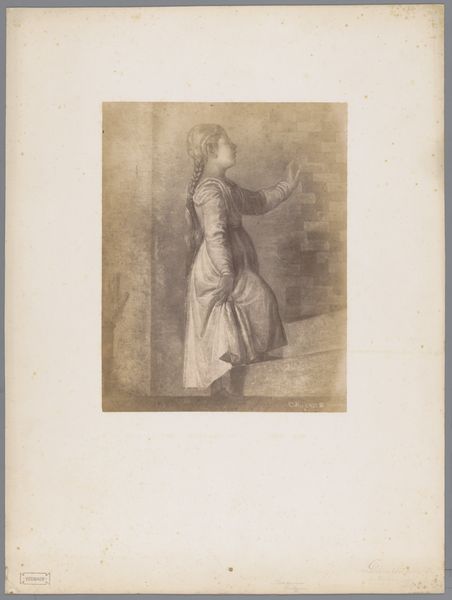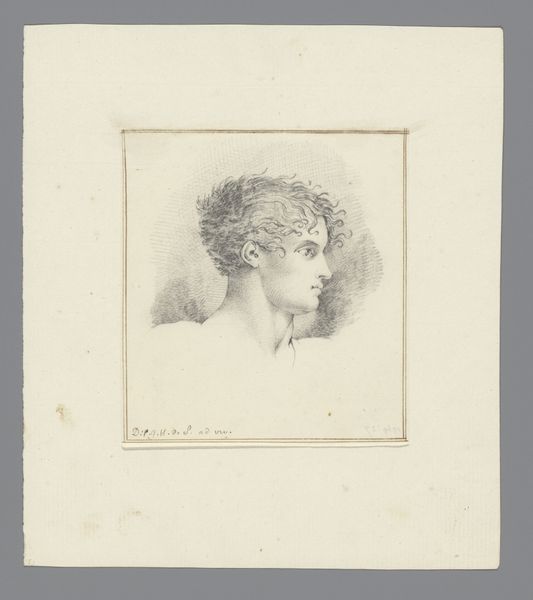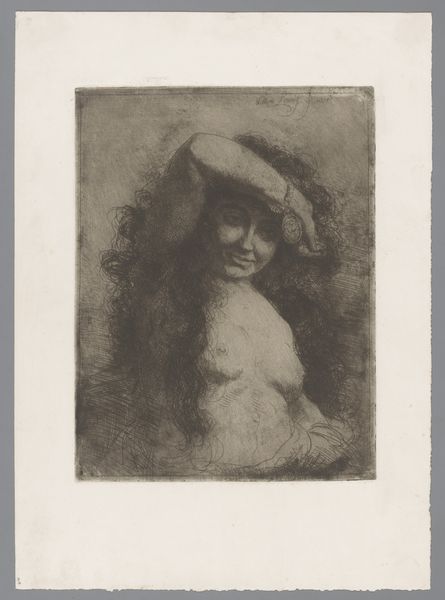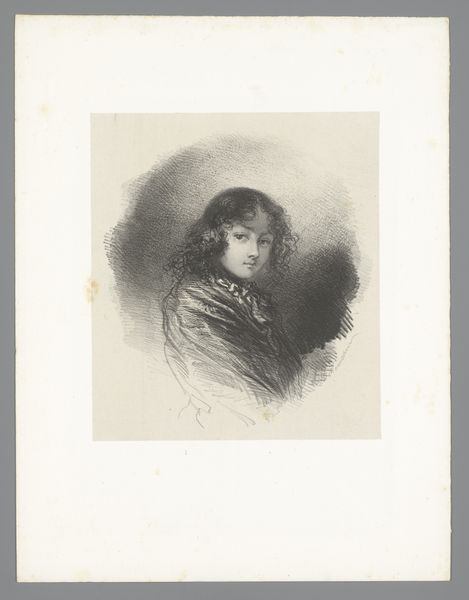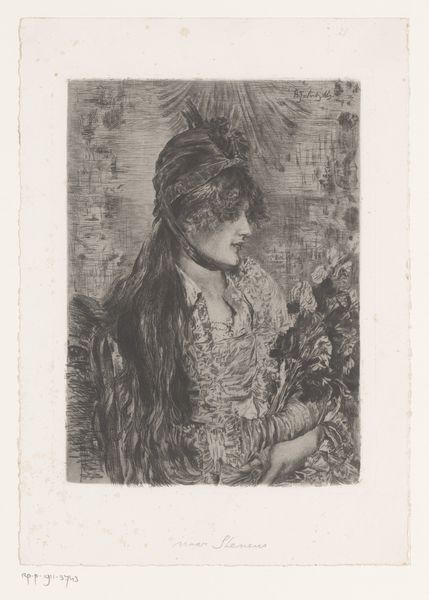
Fotoreproductie van een geschilderd portret van een onbekende vrouw door Jean François Portaels before 1863
0:00
0:00
Dimensions: height 336 mm, width 260 mm
Copyright: Rijks Museum: Open Domain
Curator: Here we have a gelatin-silver print taken before 1863 by Edmond Fierlants, entitled "Fotoreproductie van een geschilderd portret van een onbekende vrouw door Jean François Portaels," which, translated, is a photogravure of a painted portrait of an unknown woman by Jean François Portaels. Editor: My first impression is one of pensive mystery. She appears adorned, almost crowned, with foliage and perhaps grapes, a melancholic goddess captured in monochrome. It feels undeniably romantic. Curator: Indeed. Portaels was a key figure in Belgian Romanticism and Academic art. He often depicted women in allegorical or exotic settings. This photograph, though, adds a layer of complexity as a reproduction. The gelatin-silver print medium itself impacts how we interpret it, softening the painterly strokes and almost imbuing it with a timeless aura, less of a moment and more of an enduring representation of beauty. Editor: I am curious about this choice to reproduce the portrait through photography. On one hand, it democratized access to art; photographic prints were far more affordable. But, on the other, does something get lost in translation? The photograph lacks the texture and expressive brushwork of an oil painting, which were deliberate expressions on the artist’s part. What does the photographic filter reveal, or perhaps conceal, about the way femininity was being portrayed in that time? Curator: What's particularly evocative to me are the vine leaves. In Western iconography, grape vines carry a strong connection to Bacchus or Dionysus and, therefore, to both revelry and sacred mysteries. Placing the subject in this symbolic framework enhances our understanding, especially when considering how female figures were coded in 19th century art—always referencing archetypes and virtues. The melancholy reading you had certainly tracks, since she’s almost never a free agent in these portraits. Editor: This is also visible through her lowered gaze, demure but hinting at inner contemplation. A modern interpretation might see the framing of "melancholic goddess" as subtly limiting, imposing an archetype instead of celebrating individual character. Is there space, perhaps, to reclaim that archetype by acknowledging both the historical context and the power of its ongoing resonance? Curator: Certainly! Looking closely reminds us that photographs were manipulated back then. Consider all the choices in lighting, tonality, even posing, not dissimilar from contemporary photographic art and its social context. Editor: Looking at it now, I recognize a visual echo of the complex debates around representation and identity that still surround us today. Curator: Exactly, and through an image crafted over a century and a half ago, perhaps the dialogue is the most intriguing artifact of all.
Comments
No comments
Be the first to comment and join the conversation on the ultimate creative platform.
